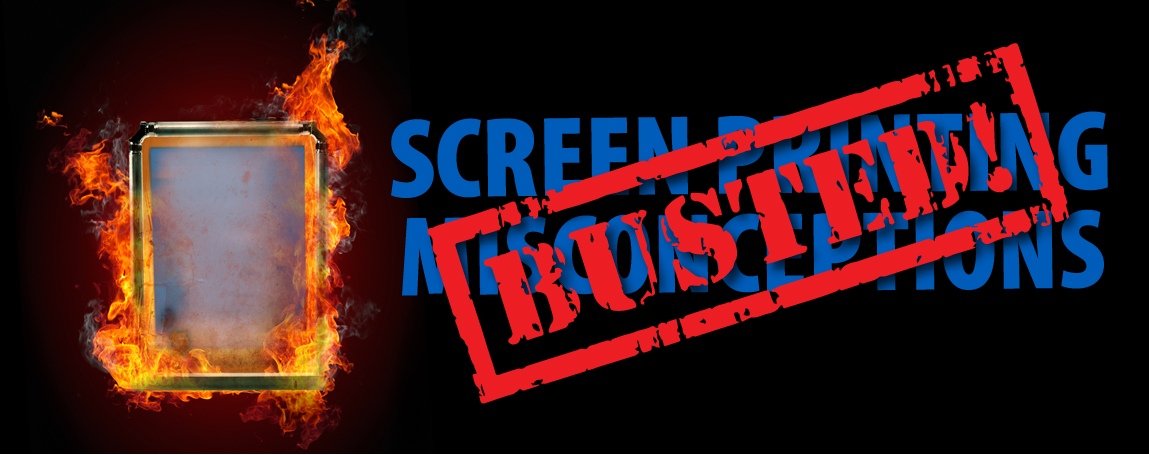
Misconceptions

By: Martin Medvetz
WRONG!
There’s a lot of artistry and finesse that goes into making a great print, but there’s also physics and chemistry at its core. Having visited many shops over the years, I’ve heard many fictional tales, mostly conceived from assumptions. Here’s a list that could fill an episode of MythBusters, Screen Making Edition…
Emulsion:
“High Viscosity = High Solids.”
WRONG! There are two primary components to photoemulsions, PVAc and PVOH. Emulsion manufacturers can choose each of these with any combination of low or high solids with low or high viscosity. I could make for you a very thick emulsion with only 20% solids. On the other end, I could blend a water-thin emulsion with 60% solids. Conclusion: solids content is NOT a direct correlation to viscosity.
Diazo addition:
“Metal spatulas can’t be used.”
WRONG! Well, there’s a caveat here…it depends. Stainless steel is fine; we make emulsions in stainless tanks. Brass, however, is a big no-no; the copper can induce pre-mature instability. Conclusion: wood or plastic is never a problem. Stainless steel is compatible; just don’t scrape the bucket and get plastic shavings, like this….(photo)

Reclaim:
“Underexposed screens are easier to reclaim.”
WRONG! In fact, just the opposite is true. During exposure, photopolymers cross-linking improves the water and solvent resistance of the stencil. On press, you’re probably using a solvent-based press wash or screen opener, then later use a solvent-based screen wash at reclaim. By not properly cross-linking those polymers initially, they now are susceptible to solvent attack. We refer to this as “lock-in.” Conclusion: proper exposure eliminates 90% of stencil issues.
DIY exposure units:
“If it’s bright, it must work.”
WRONG! I know beginners are looking to save money, but going to the hardware store and buying a halogen work lamp will only cost you time & money. To properly cure today’s stencils requires a UV range of 300~420 nanometers (mostly non-visible). Halogen bulbs, for example, are 500-800nm (visible range). They are not a match! Sure, you might get a partial cure after many minutes, but that stencil will break-down, pinhole, lock-in…etc. Conclusion: If you must build a unit, choose a light source that has high output where the stencil can see it.
Need to bust a myth? Give us a call, or email at help@chromaline.com
 Marty Medvetz is Chromaline’s Domestic Sales Manager. Marty has a strong background in screen printing. Prior to Chromaline, Marty was Screen Graphics Division Manager at Franklin International where he directed the development, sales, and marketing of Image Mate products. With 10 years of experience as an R&D Chemist, Marty formulated the photo emulsions, chemicals, and printable adhesives currently in the Image Mate line. This work allowed for a natural transition into providing hands-on technical support to customers globally.
Marty Medvetz is Chromaline’s Domestic Sales Manager. Marty has a strong background in screen printing. Prior to Chromaline, Marty was Screen Graphics Division Manager at Franklin International where he directed the development, sales, and marketing of Image Mate products. With 10 years of experience as an R&D Chemist, Marty formulated the photo emulsions, chemicals, and printable adhesives currently in the Image Mate line. This work allowed for a natural transition into providing hands-on technical support to customers globally.
Contact Chromaline Today
If you have any further questions about understanding humidity for screen printing, please contact us today.
